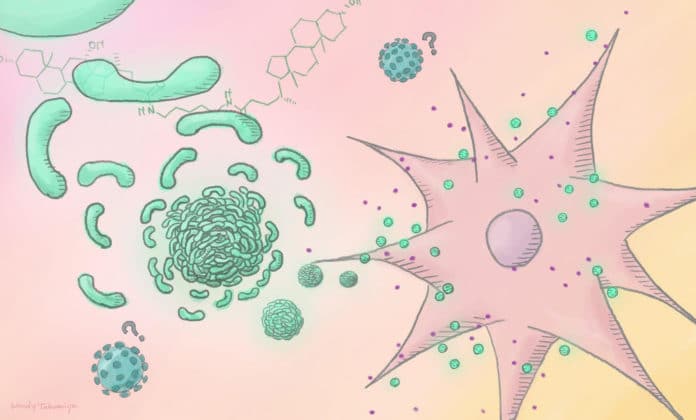Immune potentiators, called an adjuvant, trigger early innate immune responses to ensure the generation of robust and long‐lasting adaptive immune responses of vaccines. In a new study, scientists from Kyoto University have presented a new approach that quickly identifies potential adjuvants.
Scientists have discovered a molecule that, when added to a vaccine, strengthens the immune response just as well as a commonly used adjuvant.
iCeMS chemical biologist Motonari Uesugi, who led the study, said, “Adjuvants generate a robust and long-lasting immune response, but the ones currently in use, like aluminum salts and oil-in-water emulsions, were developed in the 1920s, and we don’t precisely understand how they work, which is why they are often called ‘immunologists’ dirty little secret.'”
Scientists discovered this new adjuvant after screening a library of 8,000 small molecules for their ability to self-assemble. Molecular self-assembly is simply the self-organization of molecules through non-electron-sharing bonds. This is a well-known concept in materials science that is likewise utilized by living organisms to perform complex biological functions.
Uesugi said, “We hypothesized that structures that come together through molecular self-assembly might mimic structures in pathogens, like viruses, stimulating a similar immune response.”
Scientists found 116 molecules that can self-assemble. They then screened them for the ability to increase interleukin-6 expression by macrophages. The research led to the discovery of a molecule called cholicamide. This molecule self-assembled to form a virus-mimicking structure that is engulfed by macrophages and similar immune cells. The structures are transported into specialized vacuoles to combine with a specific receptor called toll-like receptor 7, which sparks a heightened immune response. Specifically, it leads to the release of immune-stimulating cues like interleukin-6.
Further analysis demonstrated that cholicamide was just as potent in inducing an immune response as the adjuvant Alum when added to an influenza vaccine given to mice.
Uesugi said, “Our study, to the best of our knowledge, is the first report of using a small molecule library for vaccine adjuvant discovery. We hope the new approach paves the way for discovering and designing self-assembling small molecule adjuvants against pathogens, including emerging viruses.”
“Further studies are needed to determine how cholicamide mimics the single RNA strands of viruses to activate toll-like receptor 7.”
Journal Reference:
- Shuyu Jin et al. Discovery of Self‐Assembling Small Molecules as Vaccine Adjuvants. DOI: 10.1002/anie.202011604
